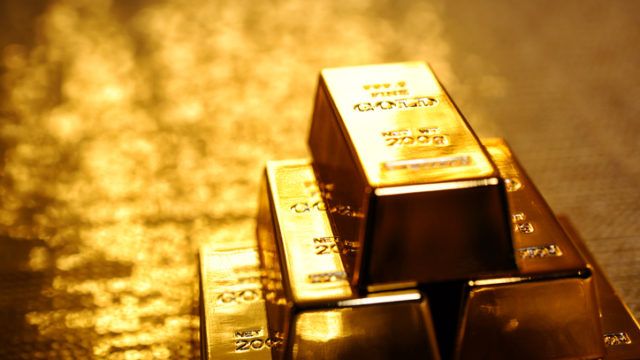After several years in the doldrums, where the only blustering has come from loquacious zealots and floundering gold fund managers, the lustrous yellow metal is finally enjoying a tailwind.
Gold topped $1500 an ounce this week, representing a six-year high, and outperforming the MSCI World Index (13.69%) so far this year, according to FE Analytics data.
“This year, gold in dollar terms has rallied more than 16%. In doing so, the gold price has breached key technical levels that open up the path to 2011’s all-time high of $1,900, which is now just 26% away,” Chris Mahoney, assistant portfolio manager of the Merian Gold and Silver Fund, told FSA in an email.
However, the performance is less impressive over the medium-term period that investors typically consider. During the past three years the gold price has risen 12.52%, and struck a trough of $1133.9 an ounce on Christmas Day 2016, according to FSA calculations from data collected by Bullion Vault.
In fact, most of gold’s positive returns have been generated since mid-May when the US-China trade dispute intensified, contrary to widespread expectations that a compromise would be reached.
Moreover, “gold’s rapid ascent from $1,400 to $1,500 in less than a month came after the US Federal Reserve proceeded with the first cut to its benchmark rate [in July] in more than a decade and a concurrent spike in foreign exchange volatility,” said Mahoney.
He attributes the rise in foreign exchange volatility to the USD/CNY rate breaching 7, President Trump’s persistent complaints about US dollar strength and easy monetary policy decisions by the central banks of India, New Zealand and Thailand, which all caught market participants by surprise.
“I expect that the era of low currency volatility has run its course and that a regime of high currency volatility will prevail as central banks become more aggressive in their pursuit of accommodative monetary policy…and a “race to the bottom” seems inevitable.
Fund inflows
The Merian Gold and Silver Fund, which invests mainly in gold miners rather than the metal itself, has benefitted from the re-invigoration of the gold price, increasing its assets under management in the last six months by $100m to $423.6m, according to its factsheet.
It has generated a 30.75% return since the start of the year, which is better than the performance of all major equity indices, but worse than the average 33.04% return achieved by all dedicated gold funds available to Hong Kong and/or Singapore investors, according to FE data.
However, the fund’s three-year cumulative return of -18.27% remains un-reassuring, as does the peer average performance (-13.87%).
Annualised volatility for the fund is also high (28.78%) and so is its maximum drawdown of -42.27% during the past three years.
Comparative data for Merian Gold and Silver Fund
|
Year-to-date return % |
3-year cumulative return % | Annualised volatility % | Positive weeks | Negative weeks |
Maximum drawdown % |
|
| Merian Gold & Silver |
30.75 |
-18.27 | 28.78 | 76 | 79 |
-42.27 |
| Category average* |
27.30 |
0.14 | 18.38 | 83 | 72 |
-25.52 |
| Gold sector average |
33.04 |
-13.87 | 26.37 | 79 | 76 |
-41.15 |
| FTSE Gold Mines Index |
39.09 |
-5.11 | 27.60 | 78 | 77 |
-40.69 |
Source: FE Analytics. Data in US dollars. *Equity commodity sector, which includes 8 dedicated gold funds out of 11 general commodity funds authorised for sale in Hong Kong / Singapore.
Interest rates and gold
Back in February, the lead manager of the then $325m fund, Ned Naylor-Leyland, told FSA that dovish signals by the Federal Reserve chairman (the so-called Powell pivot) should encourage gold buyers concerned that inflation will rise and hence real interest rates fall – which would lead to a weaker dollar.
“The key determinant [of the gold price] is the market’s expectations about the US dollar and the trajectory of real (that is, inflation adjusted) interest rates,” he said.
The world’s stockpile of negative-yielding debt reached a record $15trn in early August and the average yield on investment-grade debt in euros fell below zero for the first time ever, noted Mahoney.
“As gold moves inversely to real interest rates, it should continue to benefit as nominal rates move ever lower resulting in lower real interest rates. Lower real interest rates see the interest-bearing assets with which gold competes for investor capital become less attractive,” he said.
“Particularly exciting for gold investors is the prospect of real rates becoming negative, as the opportunity cost of holding the metal disappears entirely.”
When global growth is on the rise and investor confidence is robust, a zero-yielding asset is not as attractive an opportunity as positive-yielding bonds or equities.
“However, the bond market isn’t acting as a reliable hedge against equity market weakness, and tumbling yields have reset the playing field,” agreed Kirsty Clark, investment specialist at M&G Investments.
She also highlighted the the surge in demand for ETFs with gold exposure.
“Investors have been piling into gold-backed ETFs to hedge against the possibility of a US slowdown, and as an antidote to plummeting bond yields,” she wrote in a commentary this week.
Data released by the World Gold Council this week showed that total gold holdings backing ETFs internationally have risen to 2,548 tons, and their assets are now standing at around $115.4bn, the highest since 2013.
Another supportive factor is central bank purchases of gold.
As Naylor-Leyland told FSA earlier this year, during a decade of quantitative easing since the global financial crisis, central banks saw the need to store up with real money as the value of paper currencies deteriorated.
“Money is gold, and central banks recognise this,” insisted a proselytising Naylor-Leyland.
In fact, earlier this month, the World Gold Council revealed that in the first half of 2019 central banks bought 374 tonnes of gold ($15.7bn), which is the largest ever accumulation of the yellow metal on record by central banks in the first half of a year, noted Mahoney.
Merian Gold and Silver Fund vs Commodity Sector Average and FTSE Gold Mines Index


















